I've previously discussed the early German guided bombs at some length, but the Germans weren't the only power to try to make guided weapons during WWII.1 Most of the other powers also tried to make their weapons more accurate, sometimes with hilarious results.
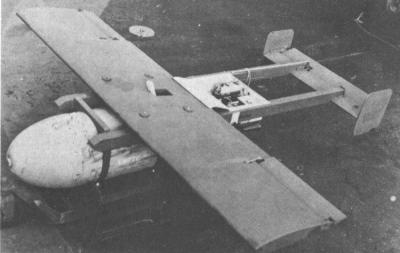
GB-1 glide bomb
By far the most prolific of these efforts were those of the US. The normal wartime procurement pattern was for the US to produce a system or two that worked well, and Germany to saddle itself with a dozen different ones, all inadequately debugged and competing for resources. Guided weapons are one of the few cases where this was reversed. The Germans only had a handful of programs, mostly in different niches, while the US tried several systems for each role, and only a handful saw combat.
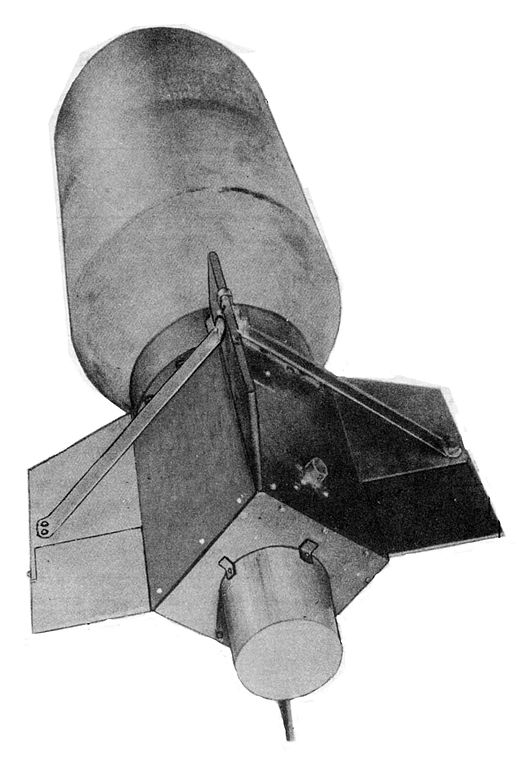
VB-1 Azon
The earliest work on this began before the war, with the GB series of glide bombs. The GB-1 was a simple weapon designed around a standard 2000 lb bomb with wings to give the bomber standoff from the target. It was fitted with a simple autopilot that would hold it on a fixed course, and simply glided until it hit something. Any error in launch position or altitude would throw it off the target, making accuracy even worse than conventional bombs of the day. As might be expected, it was not particularly successful in combat.
The GB-1's airframe also formed the basis for a wide range of other GB-series weapons with better guidance. Some used the same type of remote control radio-guidance system that the German weapons used. Another married this kind of radio control to a TV camera transmitting images back to the launching airplane, an impressive technical achievement for the time. Others used IR seekers which could see the heat of the target. There was even a variant that used a TV camera to guide itself by locking onto points of high contrast and another that homed in on flares that a pathfinder aircraft was to drop on the target. But despite all this effort, none of these weapons were used in combat.
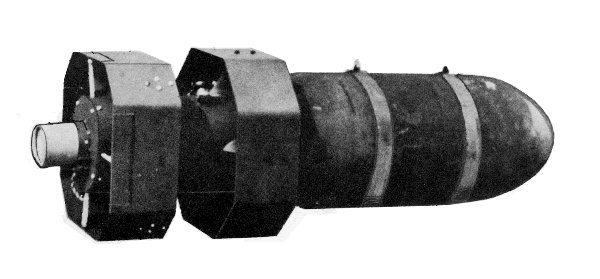
VB-3 Razon
Nor was US weapons development limited to the GB series. There was the VB series of "vertical bombs", weapons that followed a mostly ballistic course with minimal steering capability. These were essentially radio-controlled tailfin kits for general-purpose bombs, setting the pattern for many later smart bombs. The first, VB-1/2 Azon was so called because it steered in AZimuth ONly.2 This meant it was really only suitable for long, narrow targets, which the bomber would attack along, allowing the target's length to cancel out any range errors and the operator to cancel out azimuth errors. Despite this rather strange drawback, it did prove useful against bridges in France and Burma in the last year of the war.
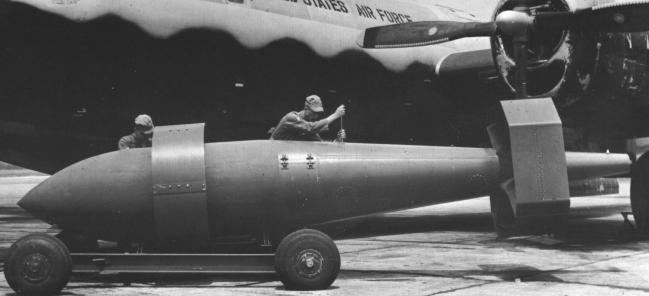
Tarzon being loaded aboard a B-29
Postwar, it was superseded by the improved VB-3/4 Razon3 which could be controlled in two dimensions. It did see service early in the Korean War, but the 1,000 lb warhead wasn't really powerful enough for taking out bridges, so the Air Force switched to the much larger VB-13 Tarzon. The Tarzon was based off the British Tallboy 12,000 lb bomb,4 and proved reasonably effective, although there were serious reliability issues, and safety concerns ended its career after an attempt to jettison a bomb from an aborted strike instead blew up the aircraft carrying it. The only other VB series bomb of any note was the VB-6 Felix, which was IR guided and intended to be used against steel mills and similar industrial sites, where it would home in on blast furnaces. None were ever used operationally.
Compared with the American efforts, those of the rest of the world were fairly low-level. The British appear to have had no guided weapons program at all, a rather odd situation given their general tendency to throw at least some resources at any crazy idea which crossed Churchill's desk. The most likely explanation is that they had more or less abandoned precision bombing against land targets early in the war, and chose to fill the anti-shipping niche in other ways. The Italians and Soviets both did a few experiments with radio and IR guidance, but the power that came closest to being third in deployment of guided weapons was, weirdly, Japan. The Japanese had a major program that produced at least four different weapons, some of which came close to operational service.5 All were intended for attacking ships, obviously an overriding need for the late-war Japanese. The IR-guided Ke-Go bomb was developed by the IJN, while the IJA produced the I-Go series, with the Ki-147 I-Go-A and Ki-148 I-Go-B being large and small versions of the fairly standard radio-controlled rocket-propelled armor-piercing glide bomb. Most interesting was I-Go-C, which was apparently designed to home in on the noise or shock of guns being fired. According to my one source on the matter, tests were quite successful, but the war ended before it could see service. Finding corroboration for this has proven impossible, and it's even possible that this is the figment of someone's imagination, due to the lack of a similar American project in the postwar years. I've also run across rumors of a magnetically-guided bomb, intended to home in on the steel of ships, but again have no details, and find the concept even more dubious.
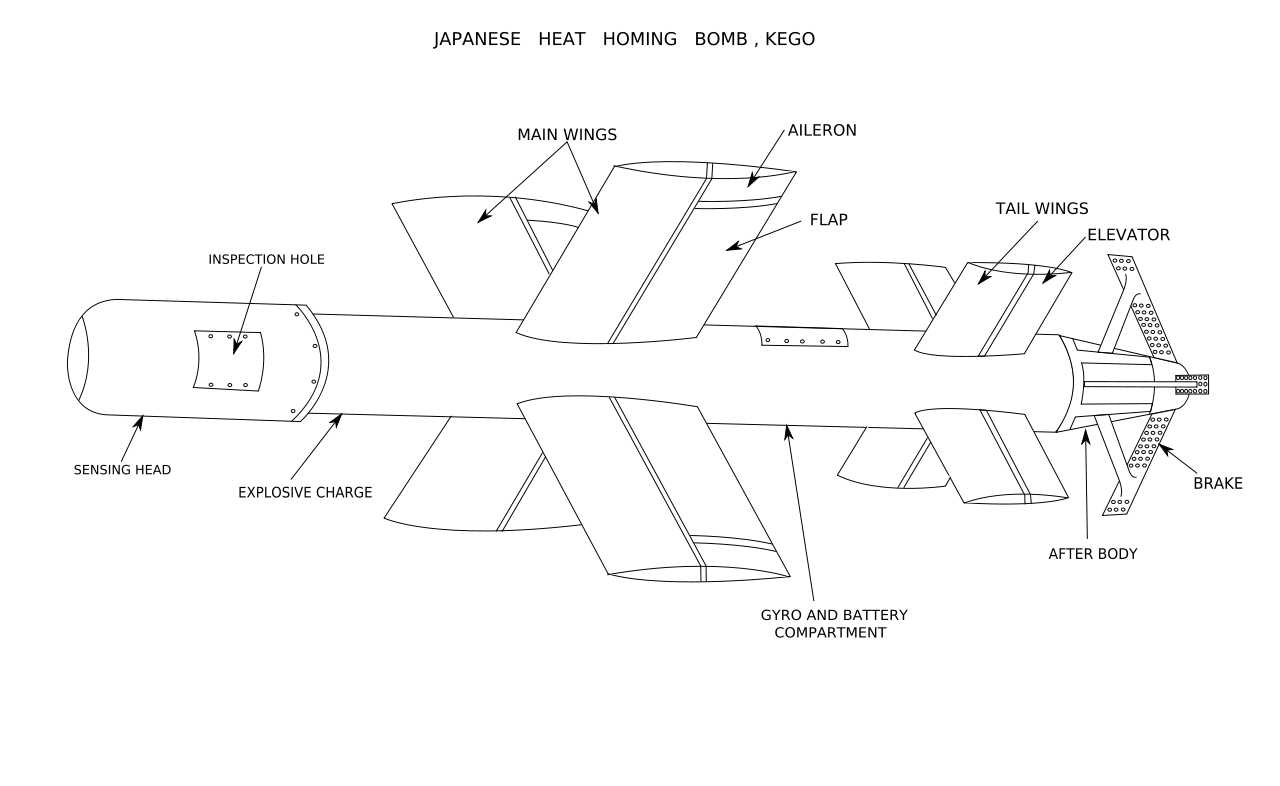
Ke-Go
Astute readers will notice that one major player has been neglected in the narrative so far. The US Navy had a guided weapons program of its own, which produced both some startling successes and some programs that raise questions about the sanity of all involved. We'll take a look at their weapons next time.
1 I'm going to limit myself to air-to-surface weapons for the time being. A discussion of early surface-to-air missiles really deserves its own space, while surface-to-surface missiles are just not that interesting. There were also a handful of homing torpedoes which were technically guided weapons, but are again out of scope for this post. ⇑
2 That is, perpendicular to the line to the target, rather than along it. ⇑
3 Range and AZimuth ONly, although I'm not sure what else they were expecting to guide. ⇑
4 Tarzon stood for TAllboy Range and Azimuth Only. ⇑
5 An argument could be made that the Japanese deployed the war's most successful guided weapon thanks to the use of organic guidance systems. ⇑

Comments
Just a guess, but was "normal wartime patter" meant to be "pattern"?
the power that came closest to being third in deployment of guided weapons was, weirdly, Japan.
Why was this weird?
@Philistine
It was. Oops.
@Doctorpat
Because it probably should have been Britain, who was very advanced in a lot of areas and chose to not do anything in this field.
I think I know one of these, and the fact that it happened is one of my favorite fun facts in all of history.
You left out the bat-guided bombs and the many hilarious quotes associated with the project:
https://en.wikipedia.org/wiki/Bat_bomb
I did, because it wasn't really a guided bomb. I suppose you could consider it a very unusual cluster bomb, but it wasn't guided, and gluing napalm to a bat doesn't a bomb make.
Also, I was running really long, and the whole thing properly belongs in the "wacky ideas of WWII" bucket, which isn't really where I was aiming.
Of course the bats provided guidance - how else would you get the incendiaries tucked nicely under the roof? I suppose next you'll be telling us that kamikaze pigeons are not a 'real' guidance system either Ü
Guidance is generally aimed at a specific target, which the pigeons were and the bats weren't.
(Some of this is also that I'm not a big fan of the "weird weapons of WWII" stuff, because it tends to be the same dozen-or-so weird ideas that I've known about since elementary school. Plenty of people have covered those, but more serious projects are often less known.)
I was mostly kidding, though that does make me wonder if something like guided mortar bombs or sensor fused submunitions that will home on pretty much any warm moving vehicle count. Maybe "seeking" but not "guided"? There definitely are advantages to being able to pick which target gets hit (say, avoiding civilians/friendlies in the area) but hitting any target, rather than just dirt is still handy.
The CBU-97 also occurred to me when I wrote that response, actually, and the CBU-97 itself is clearly not guided. (Yes, the CBU-105 is, but that's a different matter.) But it also has a lot more precision than the bats, because the Skeets aren't going to suddenly decide to go after a target way over there just because they feel like it.
You forgot the largest and most successful Japanese guided-weapons program, the biologically directed cruise missile, which used East Asian variants of an African primate as guidance units to fly entire planes and steer them into ship-size targets.
On one hand, you're very much not wrong. On the other, that's something which deserves its own series, and which wouldn't fit well here.
As callous as this might sound, I would actually be really interested in reading a comparison of the effectiveness of WW2 guided weapons systems versus kamikaze aircraft. As I understand it, kamikaze aircraft weren't particularly effective. They scored some hits, but overall were feared far out of proportion to their actual combat effectiveness. From what I've read of your post on the German guided bombs, it seems like they were similar in effect -- they scored some significant victories at first, but they were never the decisive weapons that the Axis wished (and the Allies feared) they would be.
That's actually something of a myth. By 1945, USN air defenses were so good (and Japanese piloting so bad) that the kamikazes were actually more efficient in terms of lives/planes per bomb hit than was conventional bombing. It was a solution nobody else would have come up with, but it worked pretty well. It scared the USN and RN badly, and for good reason. It was a manageable threat with the fleet they had, but they saw it as a precursor to the guided missile threat they expected after the war. The German guided bombs had a bunch of operational issues, most notably the vulnerability of the link to jamming, and was ultimately not a solution to a high-priority problem.